Written by Abe Schoener
This honest, heartbreaking article from a personal perspective looks at the efforts, struggles and work associated with the tremendously difficult, 2011 harvest in Northern California by winemaker Abe Schoener. Schoener produces wines under the name Scholium Wines.
The weather never warmed all Summer– or, I should say: stayed only warm. We never had the heat that we expect in July and August. So September came and went with few of us harvesting any grapes. Anxiety rose for people whose businesses depended on late-ripening Cabernet; all of us walked the vineyards with bated breath, knowing that an excellent harvest, with ripeness, and without rot, would be unlikely. The rains come at the end of September whether the grapes are ripe or not; and with the rains come rot.
All of us noticed that sugar levels were way behind the usual. Not surprising in a cool year– but sugars were behind not just correlated to the calendar, but also to what we were seeing and tasting in the vineyard. I was in the Chuy Cabernet vineyard in late September and tasted fruit at 18 brix that was not green. We tasted Sauvignon Blanc in Farina at 20 that one could imagine harvesting. This was unprecedented– we usually harvest Farina SB between 24 and 26 brix– and not because we are looking for those sugar levels, but because that is the concentration of sugar when the fruit in other respects tastes ready to make really good wine. This was a very exciting prospect– the holy grail that many of us hope for: ripeness without high alcohol. It is hard to get this in the sunny heat of Northern California. The cool might make for a special year. But even though Chuy was not green at 18, nor was it ready to harvest. And neither was the Farina SB. The advanced ripening that we were seeing was some kind of solace for the late growing season; but it left us still only hoping that the rains would hold off long enough for us to harvest perfectly ripe fruit.
RAIN. DOOM. HARVEST.
October 1 and we had harvested only a single vineyard– the 140 year-old Cinsault in Lodi that we make rose from. In 2010, we had harvested 8 vineyards by the first of October. Seven of those 8 were not yet ripe in 2011. And then around Wednesday September 28, we all faced the doom of the weather forecasts: several days of rain beginning over the weekend. Growers and buyers all over Northern California hastened to harvest. Trucks started clogging the roads; night picks illuminated the horizon from 11 till dawn every night. We held off; nothing seemed ripe enough– even a few days might help. By Sunday, the forecast called for rain beginning Tuesday. We prepared to harvest Guman Chardonnay and Glos Sauvignon Blanc on Monday. Both were now beautifully ripe; we would have harvested them at the beginning of the week anyway– just not both on the same day. We visited Tenbrink Petite Sirah with Steve Tenbrink; two of his clients were going to pick before the rain. Steve was going to pick his fruit too, and encouraged us to do the same. But the intensity of flavor was not there. The fruit was ripe– that was correct. But only ripe enough to be acceptable.
We knew that we could not afford to make a wine that was only acceptable. We told Steve that we had to wait. He pointed out that we had sometimes harvested the vineyard in September and it was already after that; that the days were only getting shorter; that once the rains began, there was rarely enough warm dry weather to allow the fruit to ripen further without rotting .
We recognized this, but felt that we had to take a chance. We compensate Steve by the acre, not by the ton– so the risk was ours. He would get paid even if everything rotted– but he is a farmer, a grower of grapes. He could not stand the idea of his fruit rotting. He stomached our decision; and within a few hours had decided to join us. He picked for two clients Monday, but held off harvesting his own fruit until it ripened further.
As we were reaching this decision, we received an update from Lee Hudson. He had sampled our syrah (and other clients’ fruit) for ripeness. 20 brix. We visited the vineyard. Green seeds. There was no way that we would harvest our block before the rain. Lee did not push us; he knew how far away we were. A certain sense of doom crept up on me. Not for our fruit– but for my friends Steve and Lee, both superb and rightfully proud growers. It would be difficult for either of them to bring their crops to adequate ripeness; and Lee had not just this one field, but acres of Syrah facing what could be weeks of rain . . . .
October 3. We got a crew of friends together and began harvesting Guman Chardonnay at 7 am. The fruit was superb, and the crop level amazing. We had begun helping John Guman tend his vineyard after his disastrous 2008 harvest (20 gallons). All of his hard work and ours finally paid off this year: the vines were really healthy and had a perfect (and plentiful) load of fruit. And no frost, no mildew problems, no late season heat spikes. Many kinds of grapes all over the Northwest had failed to set good crops in the Spring of 2011– especially Chardonnay. Late Spring rains had interfered with proper fertilization of the grape flowers. Guman is in a pocket of Napa that warms early– and so had early bloom and fruit set. We had a great crop because the flowers had become fertilized before the Spring rains. The same was true at our old-vine Sauvignon Blanc vineyard in Rutherford, Glos. Good pruning and good farming for the past few years left the vines more healthy than they had been in years. And the flowers escaped the rain: we had more fruit in Glos than I had seen since the first vintage, in 2004– when there were more than twice as many vines. So within hours, we went from contemplating the doom of our red fruit at Tenbrink and Hudson, to the glory of bountiful harvests at Glos and Guman. We brought the fruit in with our own hands and legs and backs, and cut the last clusters at Glos as rain began spotting the dusty ground at our feet.
We pressed the fruit the next day and measured the concentration of sugar in the juice: about 22.5 brix in each. The grapes that we had harvested, at perfect ripeness and in bounteous quantities, would have an alcohol of about 12.5%. We were amazed. If we could just get through the rains, this could be a wonderful growing season. Next began the waiting.
ROT
I visited Hudson again on Friday October 21. The fruit was ripening so slowly, there was no point in frequent visits.I had had bad reports from Lee and his vineyard manager, my friend Kelly Macleod. Their tone sounded dire. I had colleagues who had already given up on making wine from other Napa Syrah vineyards in 2011. This level of catastrophe was unimaginable to me. Perhaps I did not sense the urgency of the situation because I went to the winery early in the day, and visited the vineyard only in the late afternoon sun, at about 5 pm. I had expected disaster. What I found presented a challenge– but all was not off. The fruit had great flavors– deep, somewhat intense, nothing watery or green. Just not yet well enough developed. It was clear: we would harvest fruit and make wine from Hudson.
There was a lot of rot. On some vines, every cluster was marred. On some, there was almost none. Almost all of the rot was botrytis. There are other molds and bacteria that can infest ripe fruit. The worst of them leave the whole vineyard smelling rotten, and like vinegar. The fruit rots on the vine, with microbes attacking the sweet juice through channels opened up by tunneling molds, birds’ probing beaks, breaks in swollen skins. There was none of this in my rows at Hudson. There was mold. I thought of vineyards that I had seen on the North Fork of Long Island only days before. My colleagues there would be grateful for this level of rot– so much less than they faced year after year. And this fruit was ripe. Ripe enough already to make good wine; not quite ripe enough to make Androkteinos. But ripe. And on top of this,, the weather forecast was unimaginable. Seven days of sun showing on my Iphone; ten days on weather.com. I called Lee and told him that we would certainly harvest, but perhaps not soon.
PURE JOY
Thusday, we harvested Vanderkous Merlot and Sangiovese, from a volcano in Martinez, California– not a well-known grape-growing region. The volcano part is somewhat uncertain too: assistant winemaker Graeme MacDonald calls the origin of this understanding “marketing.” It true that the site might be on a steep, conical, marine sedimentary projection– but it sure looks like a little volcano on the edge of the San Joaquin river delta. I am sticking with volcano. Dick Vanderkous bought the cone and planted a series of vineyards around the crown of his hill. A block of merlot is on land so steep that if you slip while picking it, can you can slide 15 feet before you arrest yourself. You feel the breath in your lungs as you haul the boxes of fruit up the path to the awaiting pickup truck. We picked about 2 and a half tons of fruit there yesterday. It took 10 of us nearly 3 hours. We are eager but not professionals. The Merlot on the hillsides was scarce and beautifully ripe. Not desiccated as it was last year– plump and nearly painfully intense at once. The Sangiovese is comical by comparison: not just plump but rotund. Bursting with juice. Not always dark in color. But we made very good wine from the same unimpressive fruit last year. Dick’s volcano has special properties: even the lame-looking fruit makes good wine. We celebrated our labor with an outdoor sushi-lunch in Benicia on the way home, landed the fruit at the winery and de-stemmed none of it. We created a puncheon of whole cluster hillside Merlot from the steepest section, and two puncheons of mixed whole-cluster Merlot and Sangiovese. We expect nearly 3 barrels of wine this year; more than twice as much as last year. On this hill in Martinez, there was no mold.
FRUIT ON THE GROUND
We have had amazing weather since my October 21 visit to Hudson. There has been no rain since the 10th of October. Humidity has been low; days have been warm and sunny. There have even been some days of warm wind out of the north. Fruit has been maturing every day; I have monitored the Hudson syrah vineyard one to two times per day; I take notes, photographs, and videos– and I have seen no signs of the spread of rot in our rows. It looks like there was a terrible onset in the first days after the rains, and since then a stalemate between the molds and the skins of the grapes. Our good fortune seems amazing– 18 days of good weather at the end of October. This is unknown.
But even this good fortune has not been sufficient to completely arrest the effects of the rains. Lee and Kelly have been very concerned that the level of botrytis that I have seen would not hold. Even days ago, vineyards near Hudson had suffered so much damage that they would not be harvested. Lee and Kelly saw a natural and inevitable progression here (Lee pointed to the “biology of the mold”), and worried that my rows shared the same destiny, but were only a few days behind their neighbors.
I am happy to say that their worry has not proved true. I just returned from the vineyard– now on the 18th day of warm sun. The mold has kind of baked up– I am not sure how else to describe it. Not only has it not spread, but it has dessicated and collapsed the berries that it has infected, making them much easier to spot and sort out. We are so fortunate– in a certain sense, our rows looked splendid today. The proud splendor of survival. We will harvest Tuesday.
Many winemakers have not been so fortunate. Some growers are facing disaster. I stopped in a neighboring vineyard on the way to my rows at Hudson this morning. I saw a vineyard picked clean of fruit. But “picked” is not exactly the right word. There was no fruit remaining on the vines, but not all of it had been harvested: most of it had been cut off the vines and left to fall on the ground. I have never seen this before in a decent vineyard. Sometimes one sees it in vineyards that have no buyers. But this was a premiere vineyard, in Napa, under a lucrative contract to a sought-after label. Its fruit is precious. This was an unprecedented disaster, agricultural and financial. It was unlikely that the grower would be paid a cent, in spite of the expense of a year’s farming. It is difficult to recover from such a loss.
I have a friend, another grower outside of Napa, who is also facing disaster. His vineyard’s doom was determined by the Spring rains, long before October rot. In one late-blooming section of the vineyard, rains disturbed fruit set to see such a degree that no fruit ripened. None. He harvested nothing. Agriculture is brutal. He might have to sell his winery because of this single but total loss.
A LITTLE LESSON IN FARMING
I visited the Petite Sirah vineyard with Steve yesterday; we think that the fruit has improved a tremendous amount. Right now, it is nearly as good as it was last year– an A+ year. We will harvest it Tuesday, on the first of November. This is nearly two weeks later than last year, and it is two weeks of warmth and sun. We are very excited. We will lose a lot of fruit here too– Steve thinks that we will harvest 70% of what we would in a normal year. But 70% will be a great triumph this year. We have been very fortunate. Here is the lesson: Steve farms our section of the vineyard organically and without irrigation. He farms another section of the vineyard to sell to some other clients using conventional, but sustainable, methods. He also irrigates the other section, and thins earlier, and allows somewhat more fruit to hang. I would expect the irrigation and less thinning to lead to more rot. But it has not. There is almost no rot in the conventional section. Steve has a clear and simple explanation, and one that is remarkable and surprising to me.
Steve has used only an organic fungicide on both parts of the vineyard since fruit set– a product called Serenade which is itself a fungal derivative. But he pointed out that there was rain during bloom, and that this rain would have encouraged early-season mold infections that would show up only late in the season, once there was sugary juice in the fruit.
He used a conventional fungicide during bloom on the other section, and Serenade in my section. He thinks that the Serenade was not sufficient to prevent infection early in the year, and the the mold we are seeing now was inoculated months ago. Farming is so complex and so far from obvious: the damage we are seeing now could be due to conditions (and our reactions to them) months ago, when there was not even fruit on the vine. In other words: sure, the rot that we were seeing in my section was due to the October rains. But those rains ingnited an infection that had taken root months ago, unseen. The sign of this was that both sections had experience identical meteorological conditions– but only my section had rot.
Farming is bad enough, but organic farming must be even more complex and obscure since it is almost always more indirect and less focused on simple but effective silver bullets. Steve thinks that having decided to farm organically in our section not only cost us 30% of our yield– but might have cost us 100% if the rot had overcome the vineyard before this unprecedented October sun had brought it to ripeness. He did not urge me to abandon the practice, but was just instructing me in its price.
Growing grapes for wine is amazing. It is always fraught with complicated and difficult decisions, but it has never before seemed terrifying to me. The terrors that my friends and colleagues in Long Island experience nearly every year have come to us in Northern California this year. Their arrival is not welcome, but for witnesses, spectators– not the players– there can still be something good, instructive, fascinating. The ancient Greeks called this kind of experience
δεινός [deinos]– terrible, but amazing too. Something you cannot take your eyes off, the experience of which cannot leave you unchanged. It is a word that one might use in response to seeing a Tragedy– like Oedipus–, and grasping that it was somehow true– terrible but true. Winemaking seems so far from serious– its result a luxury, rooted now in pleasure, not necessity. And yet in its pursuit, a whole year’s harvest can end up on the ground. A whole year’s effort– fruitless. And worse: a family can lose its winery, a business fail. The report this year: Harvest is wonderful, a joyous culmination, as it always is. But it also reveals itself a much more serious event, holding the possibility of terror, catastrophe.

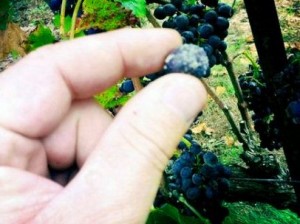
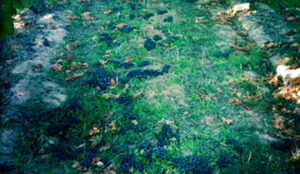

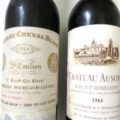
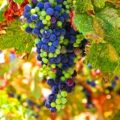
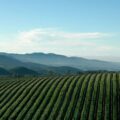

1 Comment